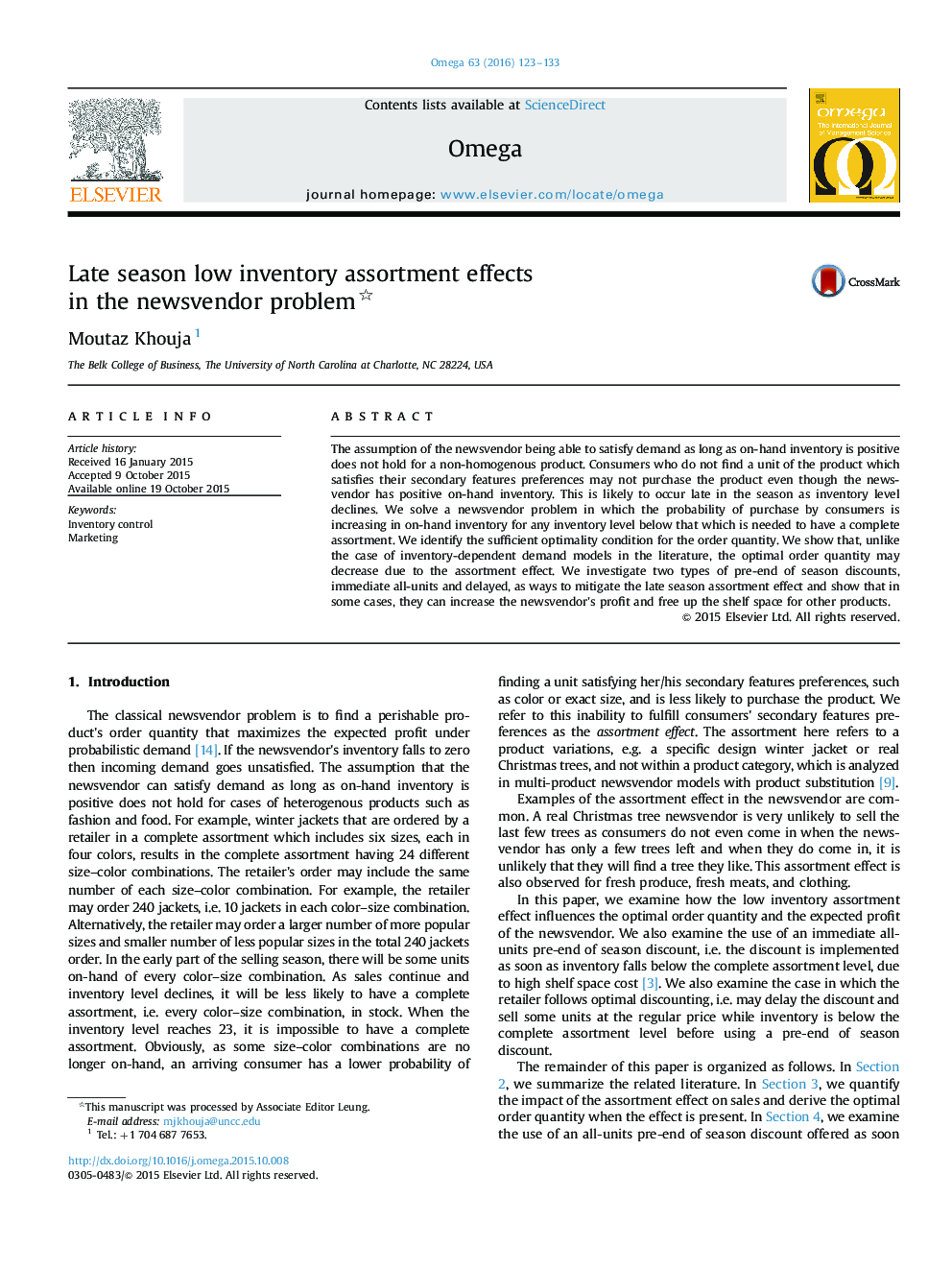| Article ID | Journal | Published Year | Pages | File Type |
|---|---|---|---|---|
| 1032391 | Omega | 2016 | 11 Pages |
•We quantify the effect of broken assortment on sales.•We identify the optimal order quantity under the assortment effect.•We analyze policies to mitigate the negative impact of the assortment effect.
The assumption of the newsvendor being able to satisfy demand as long as on-hand inventory is positive does not hold for a non-homogenous product. Consumers who do not find a unit of the product which satisfies their secondary features preferences may not purchase the product even though the newsvendor has positive on-hand inventory. This is likely to occur late in the season as inventory level declines. We solve a newsvendor problem in which the probability of purchase by consumers is increasing in on-hand inventory for any inventory level below that which is needed to have a complete assortment. We identify the sufficient optimality condition for the order quantity. We show that, unlike the case of inventory-dependent demand models in the literature, the optimal order quantity may decrease due to the assortment effect. We investigate two types of pre-end of season discounts, immediate all-units and delayed, as ways to mitigate the late season assortment effect and show that in some cases, they can increase the newsvendor׳s profit and free up the shelf space for other products.
